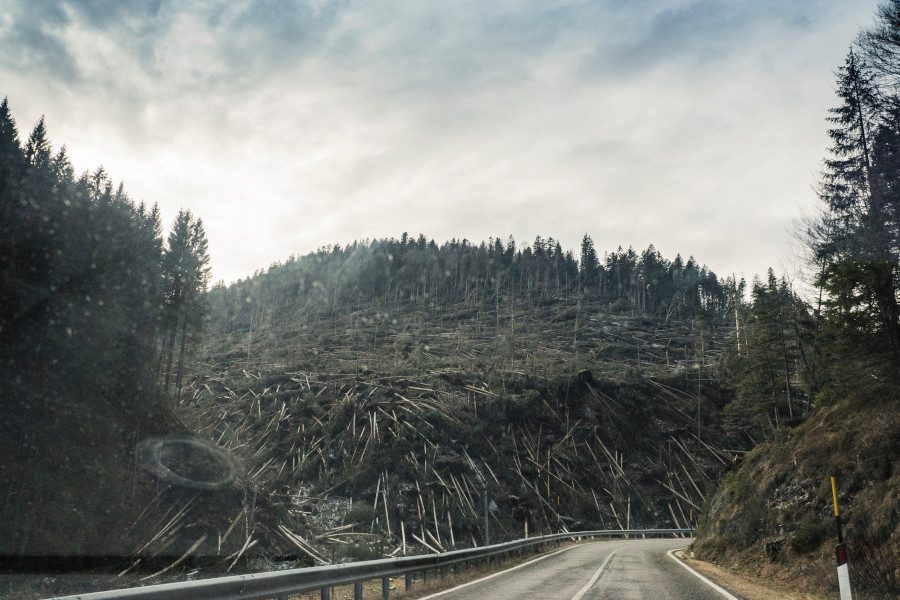In honor of National Preparedness Month, we’d like to discuss disaster management, also known as emergency management, or emergency response.
Disasters can happen anywhere and at any time. They can be natural or man-made.
As preppers, we can’t focus solely on making sure we have enough food and supplies, we need to make sure we’re knowledgeable about what to expect and how to respond to disasters.
The goals of disaster preparedness are to be knowledgeable about disasters before they happen and to understand how to use the strategies of prevention, mitigation, preparation, response, and recovery.
Below we discuss those essential goals of disaster management and readiness.
Risk Identification: Decide what risks are applicable to you
The first step in disaster readiness is to understand the risks that you should be focused on. These risks are the “scope” of your preparedness efforts and the disasters you are focused on could be far different than the risks that other people focus on. It’s a personal assessment of what situations are most likely to occur and which ones are more meaningful to you.
For example, depending on your lifestyle and personal situation, you may consider home fires, car accidents, natural disasters, inflation, food shortages, sudden loss of an income source, and health issues to be perfectly reasonable forms of “disaster” that warrant your focus on prevention, mitigation, preparation, response and recovery planning.
On the more extreme end, some people go far beyond and have a disaster management strategy for SHTF situations like nuclear attacks, biochemical attacks, long-term grid outages, “Mad Max” societal collapse, and other apocalyptic situations. These individuals have decided they need to have strategies in place to survive or thrive in even the most challenging situations, and they deserve respect for the level of effort, focus, and dedication that it takes to do so.
Now, keep in mind, that disaster planning and risk identification are NOT pessimistic or being a “worry wart”. It’s not psychologically divergent to realize bad things can happen and that in many situations no one is coming to the rescue. Taking proactive steps to understand and plan for the realities of unfortunate events occurring is smart and it’s a sign of maturity.
Identifying and planning your disaster management strategy allows you to have confidence that you and your loved ones will have the best chances of surviving the disaster.
Disaster Prevention: Reduce your risk of harm from an emergency
Disaster prevention is another way of saying “risk avoidance”. Anything you do to get yourself and your family out of the way of potential harm would be considered prevention – you’re preventing or lowering the risk of the disaster impacting you directly.
Disasters come in all shapes and sizes. They are often unpredictable, but many people still take preventative measures to try and reduce their risk. These measures vary depending on the type of disaster that you personally think has some likelihood of occurring.
For example, if you’re focused on preventing a home fire, you would make sure to keep your laundry dryer’s airflow clear, preventing you from falling victim to a disaster that affects 2,900 homes in the U.S. per year.
There’s no way we can even scratch the surface here of the prevention strategies for the myriad of situations that can occur. If you’re interested, we could consider additional blog posts that go into specific risk situations. The point is that avoidance and risk reduction for the disaster situations you’ve personally identified should be your initial focus.
As they say “an ounce of prevention is worth a pound of cure.”
Mitigation: Minimizing the impact of a disaster
Whereas prevention is reducing the LIKELIHOOD of a disaster directly affecting you, mitigation is just a fancy word for lowering or minimizing the IMPACT of a disaster when it does occur.
To illustrate, in the example of preventing home fires above, we know that we can’t completely eliminate the chance of a fire occurring, so we also need a mitigation strategy. In this example, there are a couple of fairly straightforward steps in your mitigation strategy: fire extinguishers and escape ladders are a great place to start.
So think about the list of risks that you’ve identified, as well as your prevention strategies. If there is still a likelihood of the disaster affecting you, think through how you would mitigate – minimize the IMPACT of – the disaster or SHTF scenario.
Preparedness: Being ready for the disaster
Preparedness is all about doing what we can NOW to give us the best outcomes LATER when a disaster situation occurs. This is when we get into things like proactively storing food, water, and other supplies and equipment. We’ve done what we can to prevent being impacted, we’ve mitigated the impact, and now we stock up with what we’ll need, and we plan for what we will do.
Don’t let anyone fool you into thinking preparedness (prepping) is fringe. Governments, businesses and individuals prepare for future disasters on a regular basis. Mature companies have entire teams or departments dedicated to disaster readiness planning and preparation. So it’s important – very important. Decide how important it is to you to be able to survive and sustain in a disaster situation, and then how much time, effort and money you’re willing to invest NOW and over time in order to be prepared.
Don’t get us wrong… we’re not in favor of randomly hoarding in order to survive the aftermath of a disaster. But we are strong proponents of thinking ahead, investing in contingency food and supplies and planning how you’ll respond in various disaster situations. There’s a big difference between hoarding and preparing.
In addition, many people choose to focus on self-sufficiency as their preparedness strategy. This is an ideal situation for many disaster scenarios, as you would have a sustainable solution, such as living off the grid, but you’ll still need to be prepared with the tools that would allow you to live without electricity or running water, as examples.
As preppers, it’s up to us to determine which paths of preparedness we choose to take for ourselves and our families. The point is to think it through, and decide on the strategies that makes the best sense for your situation.
Response: Taking action in the wake of a disaster
This is when your preparations come to fruition. This is when your extra food and supplies may save your life, and you take action on the plans you have in place from the prior section. If you’re using the Ultimate Prep System, you’ll know exactly how long you and your family have the sustenance you need to get you into the recovery phase (next section).
It’s no surprise that following a disaster, people need food, water, and shelter. But the immediate needs of people are often not met until days after the disaster has occurred.
With emergency response organizations in place, such as the Federal Emergency Management Agency (FEMA), people can be given immediate aid to sustain themselves while they wait for other relief to arrive. A disaster relief agency other than FEMA may provide immediate assistance, such as the Red Cross. Still, it can’t provide the long-term services necessary for people to return to their communities and resume their normal lives.

Consider joining a local community emergency management committee or starting one in your neighborhood. Similar to a neighborhood watch, but focused on getting your community or neighborhood through a disaster.
“Individual commitment to a group effort—that is what makes a team work, a company work, a society work, or a civilization work.”
Recovery: Restoring normalcy
When a disaster strikes, you immediately take responsive actions (above section) based on your plan (Preparedness section). Once the situation starts to settle out, you move into the Recovery phase. In this phase, you’re rebuilding – homes, systems, communities, etc – anything that’s going to get you into a sense of normalcy.
A disaster is not just an event that happens. It’s a persistent condition where the previous conditions of life are difficult or impossible to sustain in the long term.
One consideration as you build toward recovery after a disaster scenario is the use of lumber. Lumber is the raw material used for many construction projects. In the wake of a disaster, people need to see it as an opportunity to re-use wood.

There are many ways to reuse lumber in construction and rebuild homes in an environmentally safe manner. A house can be constructed from salvaged materials as well, making it more affordable and sustainable.
Disaster Management is an Important Aspect of Being a Prepper
A lot of people think having a large inventory of supplies means that they’re prepared for a disaster.
Having supplies is one ingredient of being prepared. But there are steps that are even more fundamental, like risk identification, prevention and mitigation. And sometimes people overlook the need to plan – we need plans to get us through right before, during, and after a disaster.
If you have any suggestions for planning for a disaster, share in the comments below!
Stay prepared friends!



